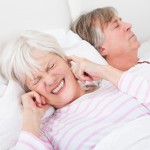
Another new critical summary form the ADA-EBD Center looks at a 2011 systematic review by Ahrens et al. The aim of the original review was to compare the effectiveness of different design features of mandibular advancement devices (MADs) in reducing the severity of obstructive sleep apnea (OSA).
The appraiser notes that some relevant studies may have been missed by not hand searching some specialised journal such as Sleep Medicine and that a meta-analysis was not conducted because of variations in treatment outcome measures. Although is was suggested that a limited meta-analysis could have been conducted. While all 14 included studies seemed to be effective at reducing the patients’ polysomnographic index scores there are concerns about the quality of the available evidence. It was also noted that no patient orientated outcomes were noted and could be of relevance as temporomandibular joint pain has been reported with MAD use ( See Dental Elf
Links
Ahrens A, McGrath C, Hägg U. A systematic review of the efficacy of oral appliance design in the management of obstructive sleep apnoea. Eur J Orthod. 2011 Jun;33(3):318-24. doi: 10.1093/ejo/cjq079. Epub 2011 Jan 13. Review. PubMed PMID: 21239397
Lim J, Lasserson TJ, Fleetham J, Wright JJ. Oral appliances for obstructive sleep apnoea. Cochrane Database of Systematic Reviews 2006, Issue 1. Art. No.: CD004435. DOI: 10.1002/14651858.CD004435.pub3 –
